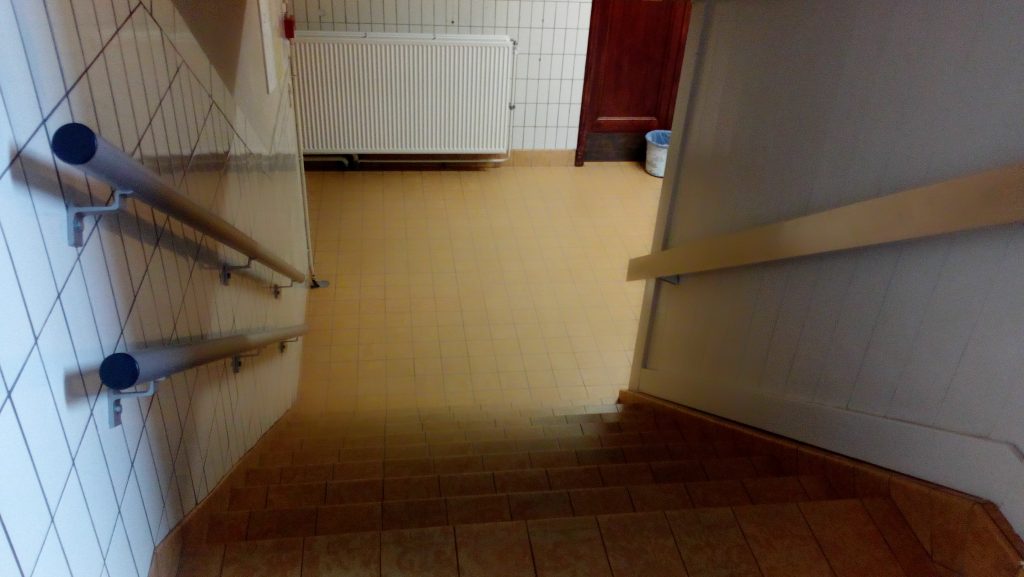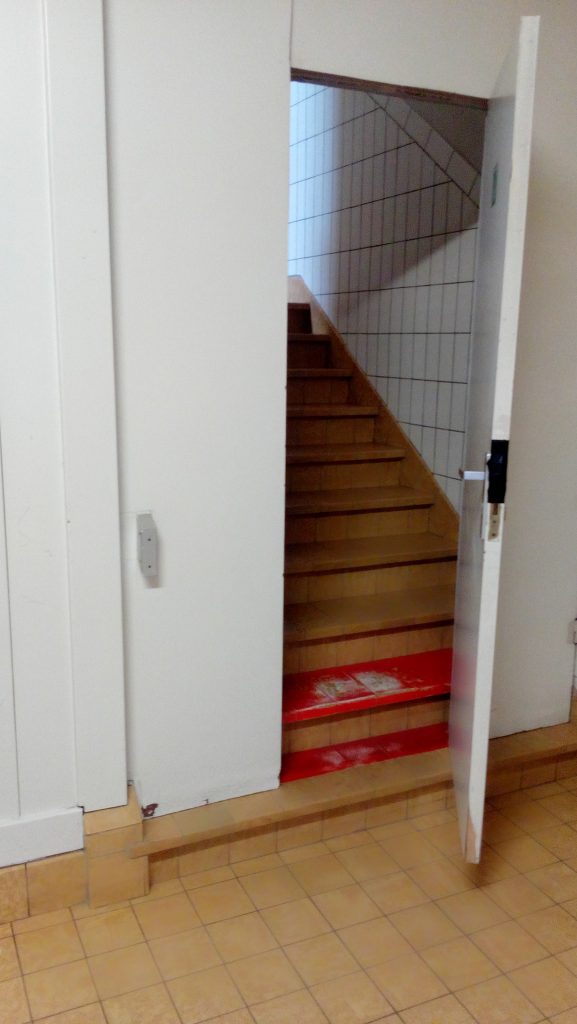Projection Ideas for Texts
Feb, March & April 2020
This is a page covering work I have produced with the Performing Arts dept of IT Sligo.
The brief is to create a projection (Video/ still or a combination) that could function as a backdrop or contributor to the setting and presentation of the potential production devised from this piece of writing.
The texts I have chosen(from the 6 provided) are “In Praise of Shadows” by Tanizaki; “LIFE a user’s manual” by Georges Perec and the “Path to the Spider’s Nests” by Italo Calvino.
The page is divided into 3 parts;
- Texts and research ideas
- Development of ideas for two of the projects
- Final draft
The excerpts are included below; in light green.
The first step was to read the texts and focus on the phrases or imagery that spoke to me. I have highlighted in black below the words that spoke to me and the images(which I attained from Creative Commons that spoke to me).
The next was to gather some images which I would like to use.
Excerpt from “In Praise of Shadows” by Tanizaki:
“A Japanese room might be likened to an inkwash painting, [this sets the scene in the Orient and I see a canvas stretched with linen with ink stains across it]

The paper-paneled shoji being the expanse where the ink is thinnest, and the alcove where it is darkest.
Whenever I see the alcove of a tastefully built Japanese room, I marvel at our comprehension of the secrets of shadows, our sensitive use of shadow and light.

This image would obviously need to be changed to be more in tune with the time stamp of the piece. I picked this for the shadows and the alcove and how the shelves on the wall indicate tidiness and Japanese organisation.
“For the beauty of the alcove is not the work of some clever device. An empty space is marked off with plain wood and plain walls, so that the light drawn into it forms dim shadows within emptiness. There is nothing more. And yet, when we gaze into the darkness that gathers behind the crossbeam, around the flower vase, beneath the shelves, though we know perfectly well it is mere shadow, we are overcome with the feeling that in this small comer of the atmosphere there reigns complete and utter silence; that here in the darkness immutable tranquility holds sway. The “mysterious Orient” of which Westerners speak probably refers to the uncanny silence of these dark places. And even we as children would feel an inexpressible chill as we peered into the depths of an alcove to which the sunlight had never penetrated. Where lies the key to this mystery? Ultimately it is the magic of shadows.
Were the shadows to be banished from its corners, the alcove would in that instant revert to mere void.
This was the genius of our ancestors, that by cutting off the light from this empty space they imparted to….”
I took some photos of a Guardian photoshoot of jewellery and which cast some shadows. I liked particularly how the gems with light shone threw them, how they created a colourful shadow effect.

I particularly like this image as it is a simple piece of material creating a shadow. I would like to play around with this further in Photoshop and have it move slightly in the wind.

I wanted to play around with the Japanese theme and I thought the simple blowing Japanese plants in the wind against linen would create an air of silence( and wisdom).




I also liked the idea of using a side profile of a face or someone’s body. The contrast in intense light and dark is apparent in the picture of the man below and the woman embracing herself.

Madame magazine; Nicolas Bourriaud
I took this image from the French magazine again, Madame. I liked the profile on the wall(and how the bars of the window also show through). The silhouette of the person looks like contemplation.

I played around with the image in Photoshop and changed the hue to make it look more atmoshpheric.
Next play: George’s Perec “LIFE a User’s Manual”
I have highlighted in Bold again where I felt a connection with the words used and what I took as inspiration.
“Yes, it could begin this way, right here, just like that, in a rather slow and ponderous way, in this neutral place that belongs to all and to none, where people pass by almost without seeing each other,where the life of the building regularly and distantly resounds. What happens behind the flats’ heavy doors can most often be perceived only through those fragmented echoes, those splinters, remnants, shadows, those first moves or incidents or accidents that happen in what are called the “common areas“, soft little sounds damped by the red woollen carpet, embryos of communal life which never go further than the landing. The inhabitants of a single building live a few inches from each other, they are separated by a mere partition wall, they share the same spaces repeated along each corridor, they perform the same movements at the same times, turning on a tap, flushing the water closet, switching on a light, laying the table, a few dozen simultaneous existences replicated from storey to storey, from building to building, from street to street. They entrench themselves in their domestic dwelling space – since that is what it is called – and they would prefer nothing to emerge from it; but the little that they do let out – the dog on a lead, the child off to fetch the bread, someone brought back., someone sent away comes out by way of the landing.
For all that passes, passes by the stairs, and all that comes, comes by the stairs: letters, announcements of births, marriages, and deaths, furniture brought in or taken out by removers, the doctor caused in an emergency, the traveller returning from a long voyage. It’s because of that that the staircase remains an anonymous, cold, and almost hostile place. In old buildings there used to be stone steps, wrought-iron handrails, sculptures, lamp-holders, sometimes a bench to allow old folk to rest between floors. In modem buildings there are lifts with walls covered in would-be obscene graffiti, and so-called “emergency” staircases in unrenderd concrete dirty and echoeing.
My first impressions were of the monotonous, daily toil of life. Perhaps the use of simple animations – flushing a toilet, the ON/OFF switch – setting a table? – have these animations in a loop.

When I re-read the passage; a functionary shared stairwell became the focus. Ideally transparent images with images superimposed of the actions – letters, arriving, people coming and going, maybe litter on the staircase. Having these sort of animations require videos of live action as superimposing images onto a 2D image or 3D object would look quite strange. Showing someone’s face would create too much interest though, so ideally the video would have a blurred out face and timelapse feel.

The next step is to create simple animation using Photoshop of the stairs, ideally using the picture in the top row middle. I like the use of the sun coming in at the top of the stairwell as it indicates renewal – that the stairs are continuous.
Calvino: ” The Path to the Spider’s Nest”
“Under the trees of the wood the ground is thick with chestnut husks and dried up pools full of hard leaves. In the evenings layers of mist spread between the trunks of the chestnut trees and shroud their bases, covered with the reddish sheen of moss and the bluish marks of lichen. The encampment can be sensed before it is reached, from the smoke rising above the tree-tops and the faint singing of a chorus, growing louder as one goes deeper into the woods. The hut is made of stone, two stories high, the lower storey with an earthen floor for animals, and the one above, made of logs, for shepherds to sleep in.
Now there are men above and below, sleeping on piles of fresh bracken and hay; as there are no windows through which the smoke of the fire on the ground floor can escape, it curls round under the slate roof and burns the eyes and throats of the men forcing them to cough. Every night the men crouch round the fire, lit under cover in case it is seen by the enemy, and crowd up together, with Pin in the midst of them, lit by flickering flames and singing away at the top of his voice as he used to in the tavern in the alley. The men look rather like the men of the tavern too, sitting there with hard eyes and splaying elbows, though they are not gazing resignedly into purple glasses; their hands on the barrels of their weapons and tomorrow they will be going out to fire them against other men; against the enemy!

March 2020:
I went to Belgium and took some photos for the Stairs project.






I worked with these images in Photoshop and Illustrator to give the following images.







Using the Image of the stairs and lift I created this short sequence which I created using After Effects:

Using a gradient ramp that slowly moves up the screen to depict the changing of darkness to light; daily motions.

For the Calvino in the Spiders Nest, I used Unreal Engine to create it.
The camera work was initially very fast
I played with various ways to slow it down – there is supposed to be a Play rate that can slow down (like in slow motion with movies) at certain points; however this is a bug in the software which has yet to be fixed.
My main concern was the lack of focus on the tree. I wanted the tree to be the main focus and it was cumbersome to keep moving the camera as well as the rotation.
To correct this, I used the LookAt function and focused on the tree.
I also included some fire as I felt that created the atmosphere of at nighttime.
I really wanted more movement within the scene and tried to get the vegetation to move in the wind. I think the crackling of the fire would help a lot with this.
I managed to get some 3D birds, whose movements were quite robotic but it was the idea of it that I wanted.
